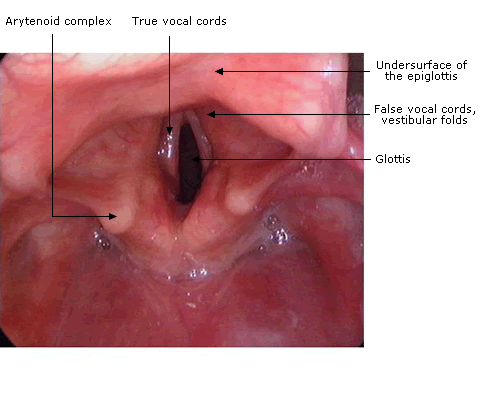Laryngoscopy
Successful laryngoscopy and intubation requires the patient to be positioned correctly and adequately anaesthetized, and usually paralyzed.
The laryngoscope is inserted into the right side of the mouth to displace the tongue to the left.
Using a standard curved blade Macintosh laryngoscope, the tip of the blade is placed in the space above epiglottis, i.e. the vallecula, to lift the epiglottis and bring the vocal cords and glottic opening into view.
The true vocal cords are whitish in colour and move with breathing and phonation. The vestibular folds, or false vocal cords, are bulges of mucosa above the true vocal cords.
